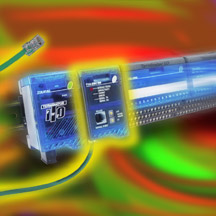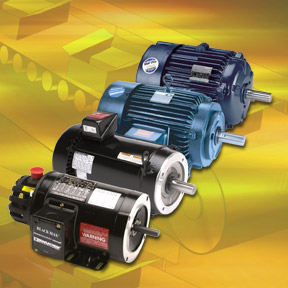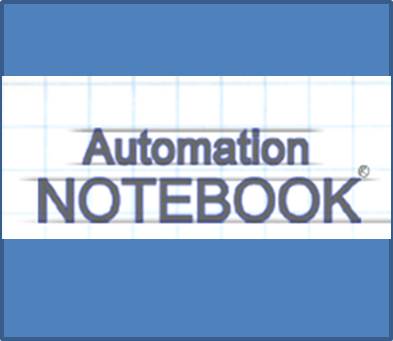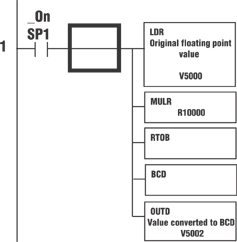We have added several exciting products since our last edition of the Automation Notebook. Here are some highlights about some of those new products including: T1H EBC100 Ethernet link, Non-metal Enclosures, Marathon Motors line extended, 2-pole supplementary protectors, 50 and 75 VA control transformers. New Module Provides High-Performance, Low-Cost Ethernet Link The new T1H-EBC100 module provides a…
ApplicationAutomation NotebookFeature StoryIssue 2 – 2004Learning ResourcesManufacturingMotorsNotebook IssueProduct
Strides in Motor Technology
When AutomationDirect was looking to provide customers with a high-performance, cost effective drive/motor package to complement their growing line of AC variable speed drives, they turned to Marathon Electric – a well-recognized, well-respected name in the industry. Marathon manufactures a full line of general purpose, inverter-duty, vector-duty and NEMA premium efficiency motors to meet the…
ApplicationAutomation NotebookData System MonitoringIssue 2 – 2004Learning ResourcesNotebook IssueTechnology Brief
How Secure Is Your Control System?
-Maroochydore, Australia, April 2000- Fired by the contractor who installed the control system at the local water treatment plant, engineer Vitek Boden was then rejected for a job by city council. Laid off and ticked off, Boden sought his foul revenge. Using a stolen laptop and two-way radio, he connected wirelessly to the plant’s control…
AutomationDirect has launched the SureStep family of products, a new open-loop stepping system that provides simple and accurate control of position and speed and offers a great solution for applications requiring lower power and low cost. The SureStep family includes four standard motors and a “one-size-fits-all” step motor drive. With holding torques from 83 oz-inch to 434…
Automation NotebookCover StoriesIssue 2 – 2004Learning ResourcesNotebook IssueProductProgrammable Control
After the Blackout
Modernizing America’s Electric System Where were you on August 14, 2003? If you live somewhere other than the Northeast or Midwest, the date of North America’s largest blackout may not be familiar to you. I was working on my home computer, while my spouse was engrossed in vacuuming our cars. When everything came to a…
In each issue of the Automation Notebook we feature a section of brainteasers. These are the brainteaser answers from Issue 1, 2004 of the Automation Notebook. The brainteaser questions are repeated in black. The answers to the brainteaser questions are highlighted in red with explanations. You can view the brainteasers from Issue 1, 2004 without the answers here: http://library.automationdirect.com/brainteasers-issue-1-2004…
8 Years Later When a memo was delivered into my “in-box” requesting office humor for the premiere edition of Automation Notebook, numerous events immediately entered my mind. I thought about an unsuspecting team member’s SUV that was filled with three lawn size garbage bags of paper confetti as retribution for a recent prank he had…
I think we’ve all been confronted with a challenging application at one time or another. In this particular instance, I was contacted by a customer asking for help with an application using a floating-point number that needed four decimal places. Even though the fourth decimal place was not being used, it had to have a…
+Tech TopicsAutomation NotebookIssue 1 – 2004Learning ResourcesNotebook IssueProductProgrammable ControlTechnical Review
How to Connect 3-wire Sinking & Sourcing Devices to PLC Input Modules
When connecting a 3-wire field device to your PLC system, it is important to have a solid understanding of sinking (NPN) and sourcing (PNP) concepts. Sinking and Sourcing First, sinking and sourcing are only associated with DC circuits. DC circuits can conduct current in one direction only. This means that it is possible to connect…
+Tech TopicsAutomation NotebookIssue 1 – 2004Learning ResourcesNotebook IssueProductProgrammable ControlTech Thread
Jumping on the "stage" wagon
The Technical Support Team at AutomationDirect receives a large number of calls on RLL Plus (Relay Ladder Logic Plus) programming, also known as “Stage” programming. Most of the callers want to understand how and when it should be used. The short answer to the “when” question is that it depends on the process that is…










